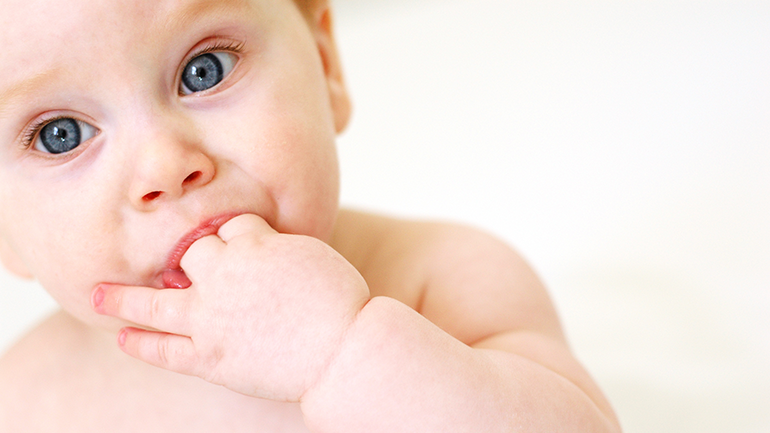
There is a wide range of normal with teething. Many children have no problems, while others experience discomfort. Here are the common signs of teething.
Baby’s arrival brings much joy, and often, many questions: Is he too warm? Is he eating enough? Is she sick? Or is she just teething?
Most children show the first signs of teething between four to six months, although it is not uncommon to start earlier or months later. Once teething begins, it will continue for about two years. Most children will have a full set of primary (baby) teeth by their third birthday.
There is a wide range of normal with teething. Many children have no problems, while others experience discomfort. Even the order in which teeth appear may vary.
The most common signs of teething are:
- Drooling (which can lead to a facial rash)
- Biting on fingers, toys or any other hard object in baby’s path
- Gum swelling and sensitivity
- Irritability or fussiness
- Refusing food
- Increased nursing
- Changes in sleeping routine
Many illnesses coincidentally appear at the same time as emerging teeth. Teething does not cause a fever, diarrhea or diaper rash. If your baby experiences these symptoms, consult a health care professional.
Find ideas on helping your baby cope with teething.
